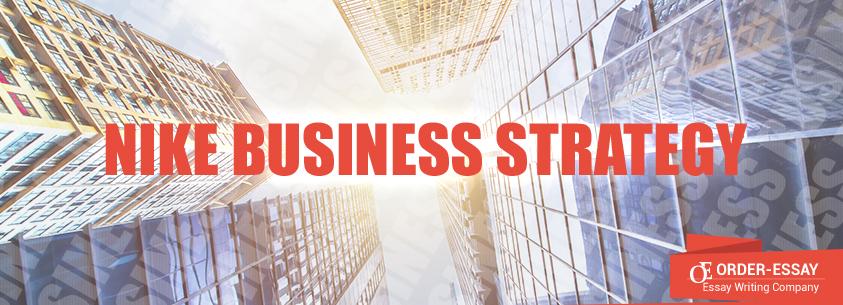
Abstract
Competition is a critical business aspect for any market. It controls the operations of firms within an industry. The operating environment controls market gains and losses that periodically influence the sales of companies in the market. Thus, such market fluctuations guide the market performance. The current paper evaluates the market operations of Nike Inc in recent times. This company hits headlines when its market sponsorship deals to such leading market rivals as Puma and Adidas. The latter one is a leading rival of Nike. It controls the football sports industry. Nike has lost its sponsorship deals at the Manchester United and Arsenal to Adidas and Puma respectively. However, Nike has acquired Reebok a leading sport wear manufacturer in the United States. The acquisition and less reliance on football still indicate that Nike is a superior firm even for its closest rival Adidas.
Keywords: Nike, football, competition, market, sports, Adidas, Puma
Competition is a parcel and part of any environment in business. An industry is often considered as a group of firms producing similar commodities or substitutes for the same market. Thus, this group of firms has to fight for the same market. Through product differentiation, a company creates a unique product that establishes a strong rapport with the market, thereby establishing a market niche. The market niche allows the company to beat competition since customers build brand loyalty with the product. The sport industry also faces the similar market dynamics. There is a stiff competition that is characterized by the similar product with a little product differentiation and practically no substitute. The paper discusses the market dynamics around Nike Inc. The focus is placed on the competition and the market served by Nike Inc.
Nike Inc. was established in 1964. It is headquartered in Oregon in the United States. Currently, the company has the factories in more than 40 countries from which products are supplied to almost everywhere of the world. There are about 48,000 employees working in more than 750 retail stores, 90 administrative offices, 110 sales, and show rooms. The main products produced by Nike include sports shoes, clothing, balls, and accessories. There are also some services in training on pitch and online. Within the industry, Nike faces such companies like Adidas, Puma, Jawbone, and Fitbit. Of these competitors, Adidas is a main rival matching Nike. The sports products can service men, women, and kids in football, basketball, tennis, skate, and golf (“Nike football products,” 2014; Nike, Inc., 2013).
The company sponsors big teams such as Barcelona, Paris Saint-Germain, Manchester city, Inter Milan, and AS Roma. These football teams are spread within Europe. For the National teams, Nike supplies kits for Brazil, England, Netherlands, France, and Portugal amongst others. It also sponsors the big name athletes with specific products like shoes or shirts such as Cristiano Ronaldo, Neymar Santos, Tiger Woods, and Wayne Rooney. Generally, the company has increased its revenue in the last 10 years. The firm has made its business sample diversified from celebrity endorsement to innovation. It also innovates for competition and anticipates better products that may push it out of business (“Nike football products,” 2014; Nike, Inc., 2013). According to Carr (2013), the firm realized total revenues worth $24 million in 2013. Wallace (2013) notes this about the company’s revenue growth of 8% by 7 billion. The shares of the organization stood at $0.86 as of 26th September 2013. Due to the strong performance by Nike in the market, it has been included in the Dow Jones index.
Findings
The review of the performance of Nike is of concern to stakeholders after losing some major sports deals to some leading sports houses of the world. These include Arsenal and the Manchester United from the most watched league. They also may involve Juventus, the most decorated league in Italy. The big question is the current status of Nike in the sports market.
Recent Status of Nike Sponsorship Deals
Company Sponsorship Gains
According to Geier (2014), the most important acquisition that Nike has done in the recent two years apart from sponsorship of teams and athletes is the acquisition of Reebok. Reebok was a leading manufacturer of the National Football League in the United States. The company established a sponsorship contact deal with Tiger Woods in the mid of the 90s that runs to date for more than $40 million. Prior to that, the company has established a strong rapport with the market through Michael Jordan. He has made the company as a household name through the Just do it slogan (Krentzman, 1997). In football, the company maintains the strong presence in Spain where it provides Kits for Barcelona and Atletico Madrid. The teams are among the top flight ones in Spain. In other European leagues, Nike maintains deals with seven teams in Germany, four ones in Italy, three – in France, and the one – in Portugal (Geier, 2014). Currently, the company only sponsors Manchester City and Queens Park rangers in England.
Company Sponsorship Loss
In 2013, Nike withdrew its sponsorship deals with the Lance Armstrong Foundation after Lance Armstrong confessed to doping (Busbee, 2013). The foundation supports people affected by cancer. As a result, it faces the reduced spending after Nike has reduced its funding to the Foundation after the incident. In the same year, the company lost its sponsorship of the Manchester United Play Kits to Adidas for the value of 750 million pounds. Adidas, which is a major rival of Nike, took over the Manchester United sponsorship for the 2013/2014 Barclay Premier League season in England. The firm also has lost its sponsorship deal to yet another market rival in England. Nike that sponsored kits for Arsenal, another big team in England, lost its sponsorship to Puma in 2013. It has sponsored Arsenal Kits since 1994 (Dickenson 2013). It was the loss of two big English teams in one year. Similarly, in 2013, Nike lost its sponsorship for Juventus in Italy to Adidas effective from 2015/2016 football season. Like the Manchester United, Juventus is the most decorated team in Italy. Nike yet lost another team in England in 2013 within the same year. The company lost its sponsorship kit deal at Everton to Umbro (Geier, 2014).
Gains
As already mentioned, Nike sponsored the kits worn by Tiger Wood as an influential golf player. The company also supports Tiger Woods as an athletic. The Nike Company has the specific shoe deals with Christiano Ronaldo, Wayne Rooney, and Neymar within the football segment.
Effect of the Losses and Gains on the Company Business
According to Geier (2014), football sponsorship only accounts for 10% of the earnings of Nike. The income from football is less than from other sports such as running and basketball. Nike does not have the strong presence in the English premier league. It is the most watched football league in the world. The loss of this market share is replaced by the acquisition of Reebok and its market share in the United States. By capitalizing on this gain, the company continues with the upward trend in its returns. The synopsis of losses and gains is based more on a strategy than being edged out by competition from market rivals.



Reasons for the Loss to Major Competitors
According to Shunbell (2014), Nike withdraws its sponsorships or fails to renew one. It happens when it establishes that such sponsorship with a club or federation does not yield any benefits for the company. Thus, the company alludes that the production of Kits for teams it lost in 2013 were as a result of some limited returns. They could have impacted on their business operations. The loss of sponsorships was for the benefit of shareholders. One key aspect about the new deals established by the former Nike sponsored deals is that the new sponsorship deals are relatively expensive than what Nike has offered the team in the previous deals. For instance, in a new deal between Puma and Arsenal, there the fee for $5 million increases (Dickenson, 2013).
Shubnell (2014) has noted that the core business for Nike is outside soccer. The opinion explains why the sales earn about 10% of the total revenue as noted by Geier (2014). Thus, the loss of teams and athletes to major competitors is more a strategic decision than a market weakness. Nike has had its potential of tying the Manchester United Kit deal. However, the firm let it go because the Manchester United brand had been diminishing in its value. The company’s growth strategy focuses on such sports as running, football, and basketball. The football market is actually Adidas share to loss to other market players including Puma and Nike. Strategically, the firm could have forgone its market share Europe to have a leading role in basketball in the United States. Thus, the losses are not significant when compared to anticipated benefits in the new markets.
Get a Price Quote
Conclusion
The loss of the market share provides a threatening business overview of Nike that is not the case. An assumption may be built that loosing sponsorship deals for leading teams in England is a fallback in the market share of Nike Inc. However, it is a contrast of the situation because football is not a primary market share of Nike. Football returns only the account for less than 10% of the revenue of the firm (Geier, 2014). Furthermore the company has built its strategy on such superior athletes like Tiger Woods, Michael Jordan, Christiano Ronaldo, and Wayne Rooney.
In conclusion, Nike remains as a market leader based on the strategy employed by the company. It appears to be reducing its influence in Europe and strengthening its market share in the United States. By buying Reebok, Nike has the market share from the firm to acquire and maintain. As noted by the company management, the decision to drop top teams in Europe does not provide any sufficient benefits for it. It is because some additional sponsorship costs reduce company profits if they cannot attract sufficient sales. Equally, the organization has its core market share in running, golf, and basketball. The United States is the native home of basketball. The country may be probably considered as the most developed basketball state in the world. Thus, it is more strategic to acquire this market than lose some few teams in Europe.








